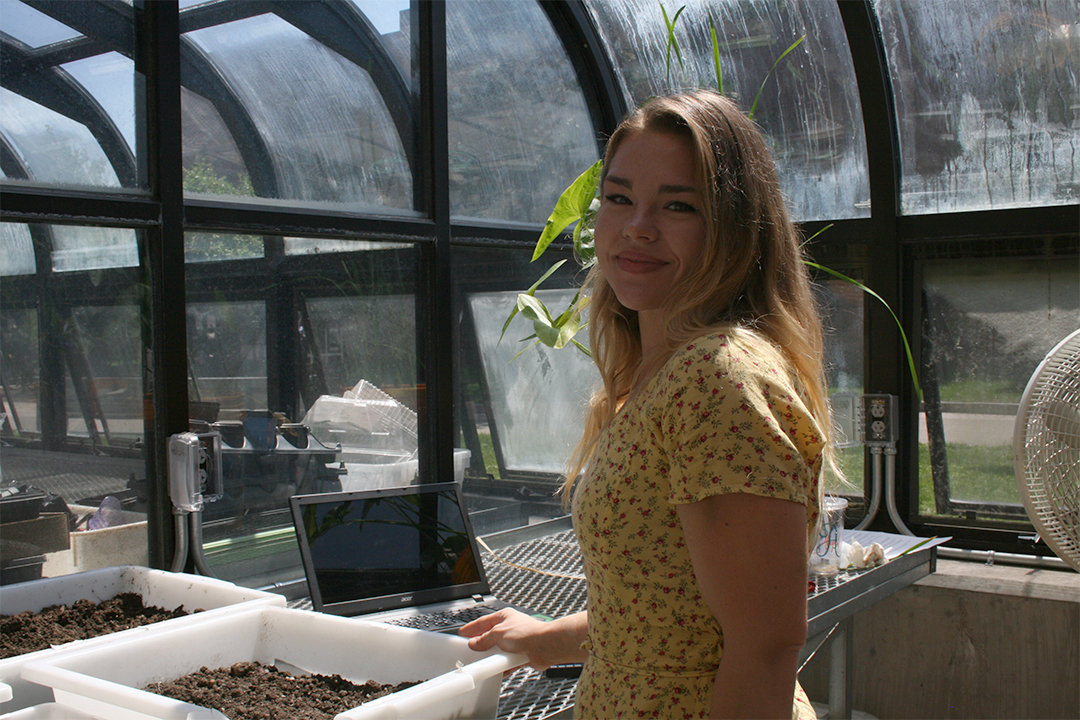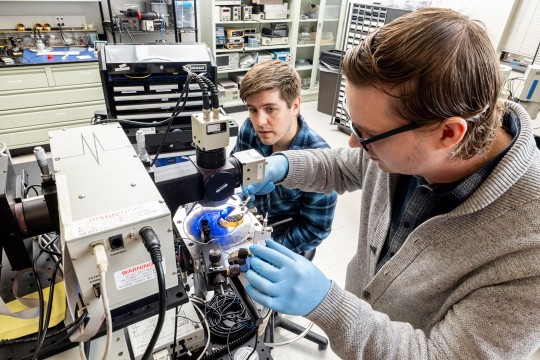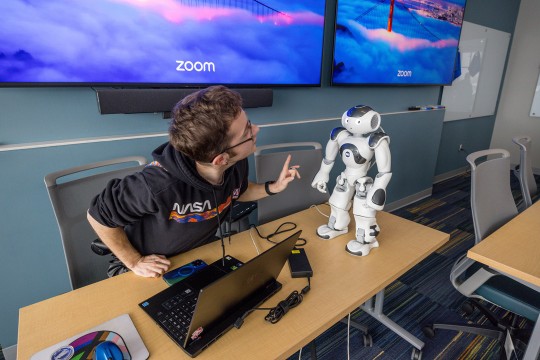Student to Student: Degradation of blended polymers
Research overview by Abby Rolston
Abby Rolston is a 2nd year Environmental Science-MS student and her mentor/advisor is Dr. Jeffrey Lodge, associate professor at the Thomas H. Gosnell School of Life Sciences.
Abby Rolston became aware of the amount of plastic waste that’s thrown away each day while working as a veterinary assistant. Today her research is focused on the degradation of blended polymers provided by the Packaging Science Department at RIT.
Plastic waste is generated at an unprecedented rate globally, leading to its circulation throughout the land, water, and even within organisms. Plastic is heavily utilized across virtually all industries due to its durability and versatility. However, the extreme durability of plastic has led to its persistence across ecosystems after disposal. Since plastic-use is heavily ingrained in modern society, research is needed on development of more eco-friendly plastic alternatives. Development of biodegradable plastic alternatives could potentially allow for the same convenience as plastic, but with a greatly shorten the lifetime of material.
My research focuses on the degradation of blended polymers provided by the Packaging Science Department at RIT. These blended polymers are made with polycaprolactone (a slow-degrading synthetic polymer) and corn starch (a natural polymer). The two components of these blended polymers have differing benefits and challenges when used as potential biodegradable packaging. Polycaprolactone (PCL) allows for better material function, but this stability also means slow degradation. Corn starch is a renewable resource that degrades rapidly, but offers poor mechanical function when used alone. Ideally, the inclusion of both materials will yield a blended polymer that functions well as a packaging material, but also is able to biodegrade at a desirable rate after disposal. I am currently working on preliminary setups with soil burial experiments, and plan to expand my methods to include food waste as a disposal environment.
Because convenience-driven food packaging accounts for a large portion of plastic waste, the food industry would be a good target for the adoption of biodegradable plastic alternatives. Within the food industry, food waste could potentially allow for an ideal decomposition environment. Food naturally degrades via bacterial and fungal processes, so the microbial community present for food decomposition may facilitate the decomposition of these plastic alternatives. My research will evaluate the degradation rate of these materials in multiple burial environments, as well as evaluate similarities and differences between microbial communities present across different burial environments.
We understand you studied Biology at Wells College and had multiple research positions there. How did you come to study Environmental Science at RIT?
Throughout my undergrad career at Wells College, I planned on getting into veterinary medicine and obtaining my DVM after my Bachelors’ degree. So, in preparation for applying to vet school I did internships with many veterinary practices. As an intern I was able to be fully submersed in the day-to-day responsibilities of a veterinarian, and I expanded my understanding of the profession. Although I loved the experiences, I gained through my internships, towards the end of my senior year I began to have second thoughts about entering the veterinary profession. So, as I was completing my second round of vet school applications, I also decided to apply to a few different master’s programs. RIT’s environmental science program stood out to me due to its focus on sustainable science as well as its’ interdisciplinary approach to learning. After being accepted to both RIT and Ontario Veterinary College, I decided to accept the offer at RIT. Looking back at my decision to change my academic and career path, I am extremely happy with the decision I made.
You are researching new types of packaging polymers and fungi. Can you talk about your research? How did you become interested in this topic?
While working as a veterinary assistant, I really became aware of the amount of plastic waste that is thrown away each day across all industries. From sterile single-use medical supplies, to packaging within the food industry, plastic is used for mere minutes just to be thrown ‘away’ and persist for hundreds, if not thousands of years. So, while looking through research done within the E.S. department, I became interested in Dr. Lodge’s work with packaging development since it stemmed from an environmental science background. Personally, I believe that the key to substantially reducing plastic pollution is molecular redesign of plastic to facilitate degradation, in addition to cleanup of current plastic waste.
Are you a College of Science student? Do you want to be featured in our Student to Student series? Help your fellow students learn from your experience! Contact us today if you would like to share your research or tell your story from one student to another student.








